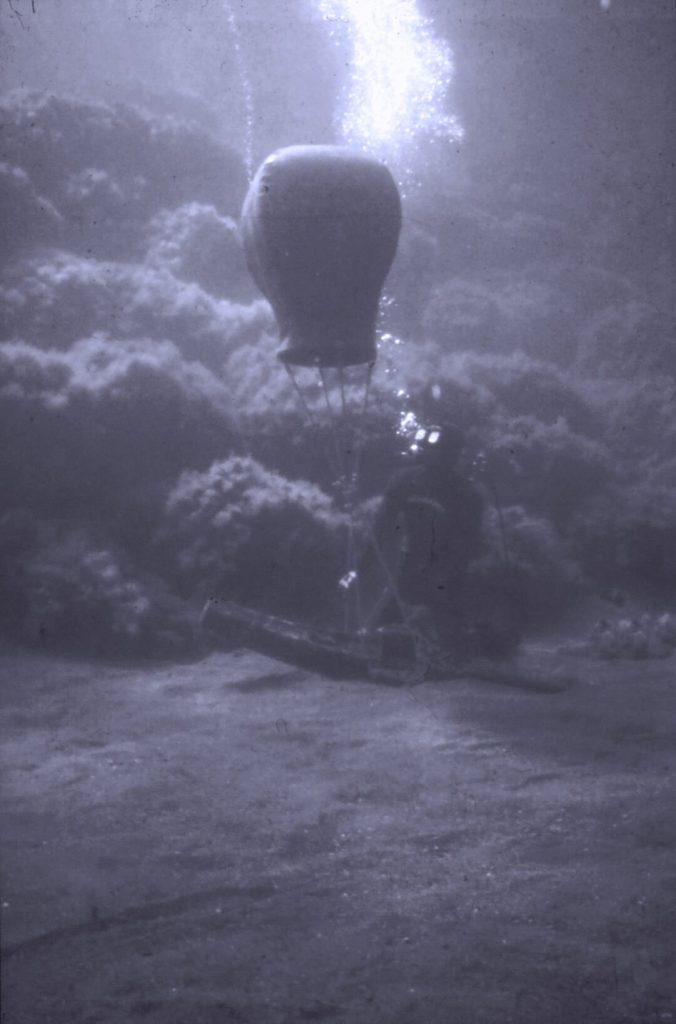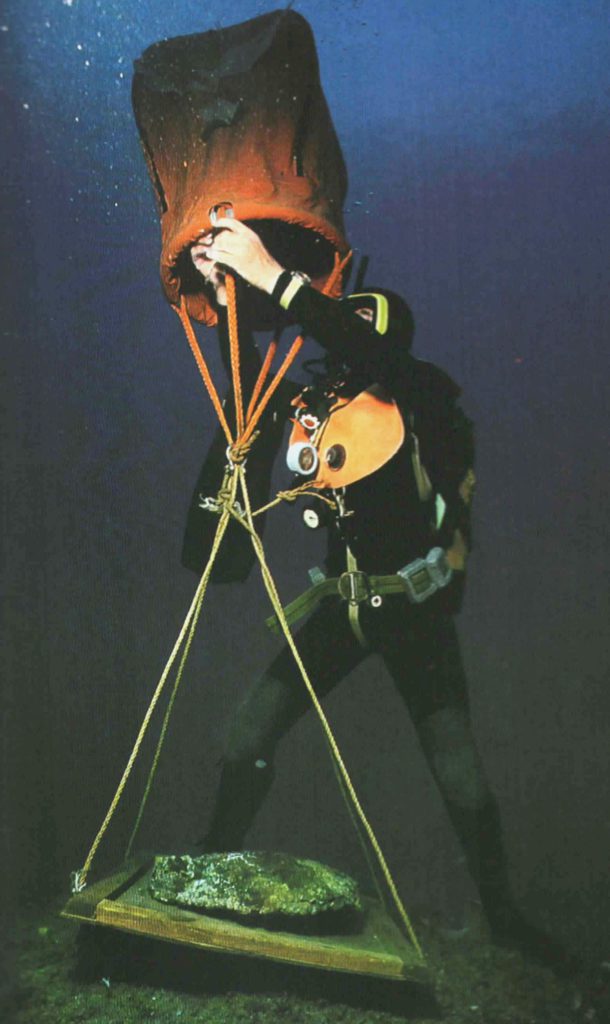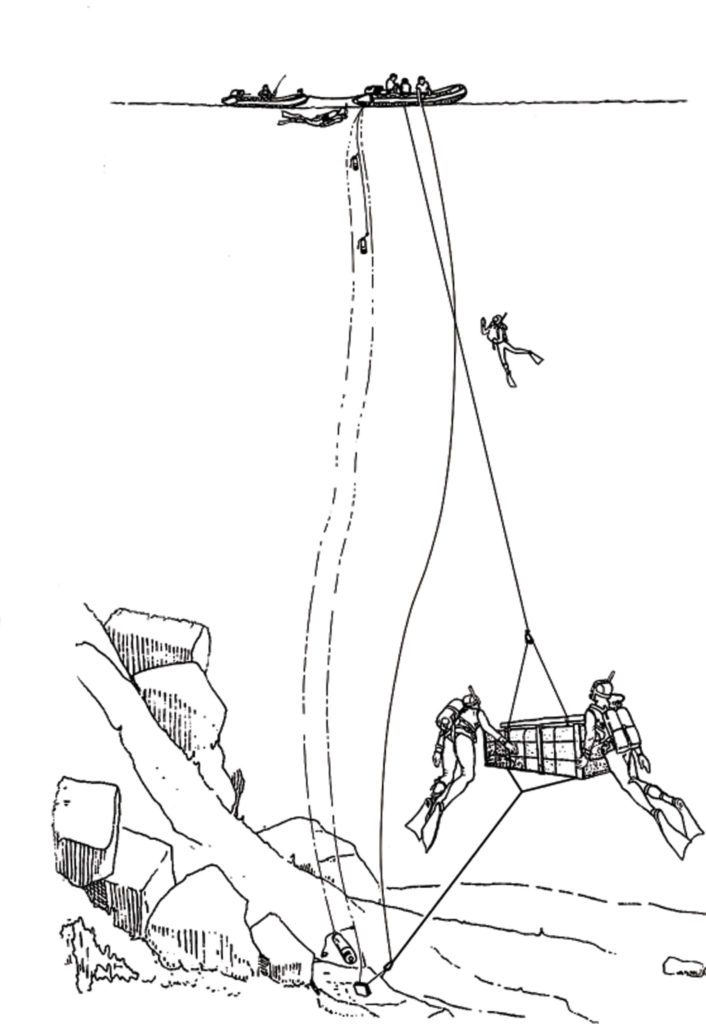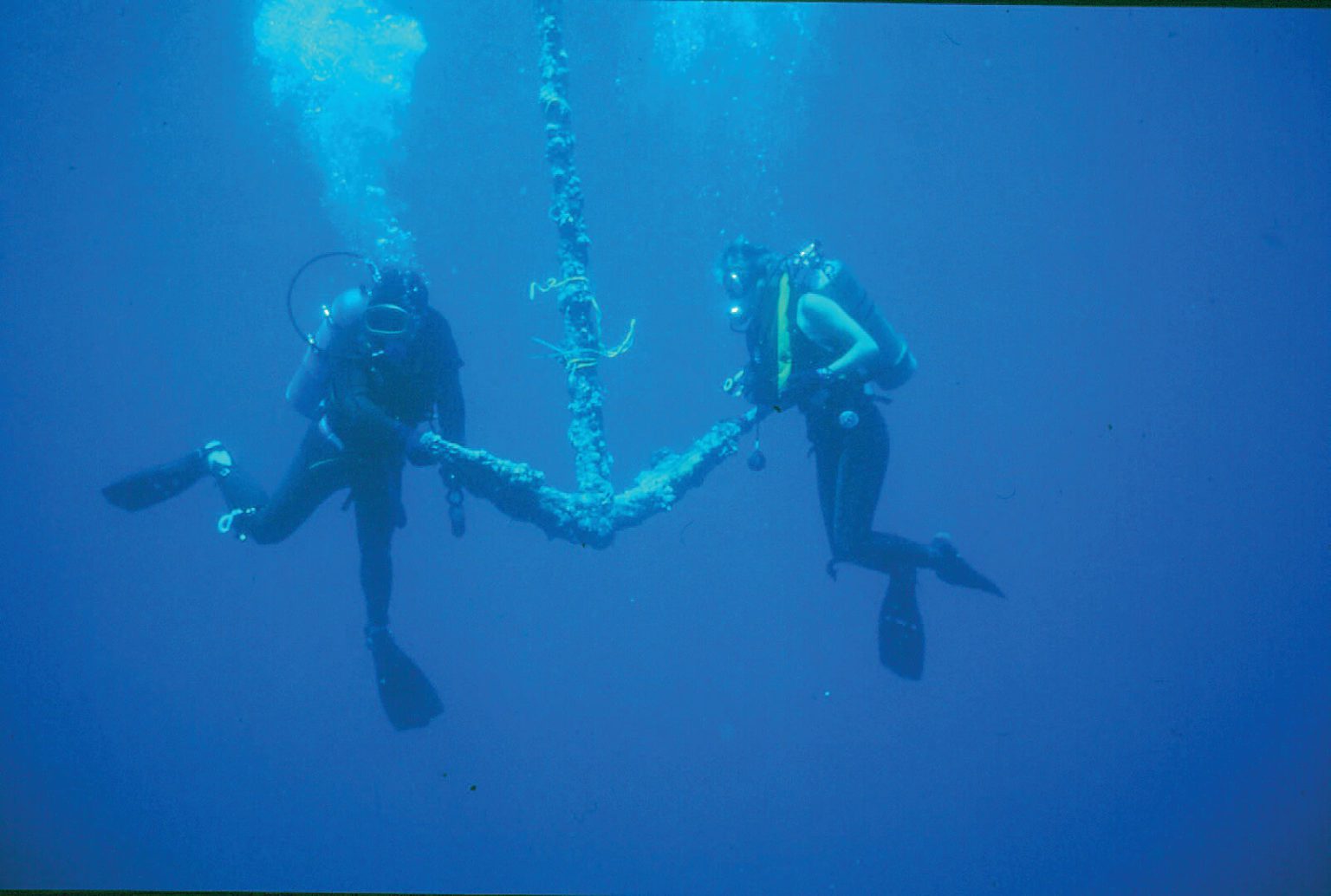By Mike Haigh, Project Director, Wreck Hunters
The most memorable events in the investigation of a historic wreck site tend to be the recovery of artefacts. Depending on the object being recovered, this can also become a high-profile event with media interest at some level or other. In this article, I will be looking at the recovery of large objects – both robust and fragile – from the seabed.
In most situations where finds are recovered from the site, unless that material weighs less than a few kilograms, the object will have to be raised using some kind of assistance.
In the UK, any person or company that owns, operates or has control over lifting equipment has to abide by the Lifting Operations and Lifting Regulations 1998, or LOLER for short. Although designed for the commercial environment, the four principles that LOLER set down for lifting operations should be followed by anyone involved in removing materials from the seabed. Namely:
- Plan the operation properly
- Use people who are sufficiently competent
- Supervise them appropriately
- Ensure that the ‘lift’ is carried out in a safe manner
No sane person can argue with these.
To most divers, the instrument that would immediately jump to mind to use to raise objects would be a lifting bag. However, the operation of these tools can be fraught with danger, as a quick search on YouTube will demonstrate. So, we need to devote a little time to the safe use of lifting bags.
Basically, lifting bags have two purposes, the lifting of an object or reducing the load of an object to a near-neutral state on the bottom – very useful if you want to move a heavy object a short distance. As we are here dealing with the recovery of objects, I will focus on the lifting process.
The first matter to deal with is the size of bag to use. Ideally you want a bag 25-35 percent larger than is necessary. If the bag is too large, there is danger that it will break the surface, discharge its air and vanish back off into the depths, with whatever prize artefact is attached to it. This problem also occurs when the support crew attempt to recover the bag. It is a good idea to attach a length of floating rope to the bag so that two or three people can grab hold of it and pull it on board. Now under LOLER regulations, the recommendation for rigging strops is 7:1. So, if you want to raise something weighing 50kg, you will need a rope or strop with a safe working load of 350kg. For attaching the rigging to the bag, small shackles or stainless-steel, locking karabiners are the best choice. It is also useful to attach a ‘holding-back-line’ to the lifting bag (remember to use knots that can be undone under load); this will not be able to arrest an uncontrolled ascent, but at least will allow you to relocate the bag (and object) should things go wrong. Give plenty of thought to the attachment points on your load and try to get the centre of gravity about right.
Many lifting bags are fitted with dump valves which can be operated by a diver; okay for short lifts but not a great idea for any reasonable depth. You get bent. The bag does not. Finally, always use a separate air source to inflate the bag. If you use a three- to seven-litre cylinder with a blow gun attachment, you can clip the cylinder to the bag and inflate using the blow gun. If Boyle’s law catches you out, it is just the cylinder that is heading for the surface and not you.
An alternative to lifting bags is to use solid plastic drums, or any other non-expansive object that will hold air. Again, you need to select the correct size of drum for the lift – but in this case, any excess air will just escape from underneath the drum, leaving the buoyancy constant. If the object is not too heavy, even ‘pot’ buoys can do the job. Other methods involve the use of powered winches or the use of cranes.
A word on packing. If you are raising delicate objects, then it is obvious that you will need to protect them from damage during the lifting process. However, the same principle applies to any object that is being raised that is of historical interest. Even large metal ones.
The techniques that we have covered so far work well for more-robust items, a list that can include anchors, cannon, amphoras and even lead and copper ingots. But what about more delicate large objects?
During the excavation of the Etruscan Wreck by Oxford University MARE in the mid-1980s, a section of keel from about 600 BC was discovered. Clearly attaching a very delicate piece of timber from about 2,500 years ago to an underwater balloon and hoping for the best would not do. After constructing a purpose-built box for the job, the team designed a system of pulleys to control the lift (see diagram). All went well on the day.



As with most of the techniques I will be covering in this series, none of the above techniques should be attempted without proper training.
As part of the Wreck Hunters course, we will be covering the recovery of artefacts so that divers gain some experience in this area.
Next time we will be looking at the techniques used to recover smaller objects, techniques that vary depending on the type of material in question.
Until then I wish you enjoyable and safe diving.








